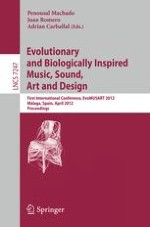This book constitutes the refereed proceedings of the First International Conference on Biologically Inspired Music, Sound, Art and Design, EvoMUSART 2012, held in Málaga, Spain, in April 2012, colocated with the Evo* 2012 events EuroGP, EvoCOP, EvoBIO, and EvoApplications. Due to its significant growth in the last 10 years, this 10th EvoMUSART event has become an Evo* conference in 2012. The 15 revised full papers and 5 poster papers presented were carefully reviewed and selected from 43 submissions. They cover a wide range of topics reflecting the current state of research in the field, including theory, generation, computer aided creativity, computational creativity, and automation.
